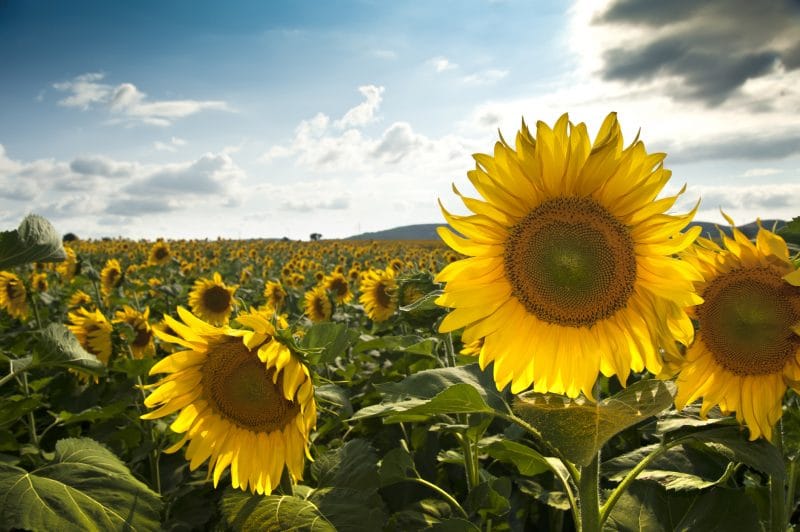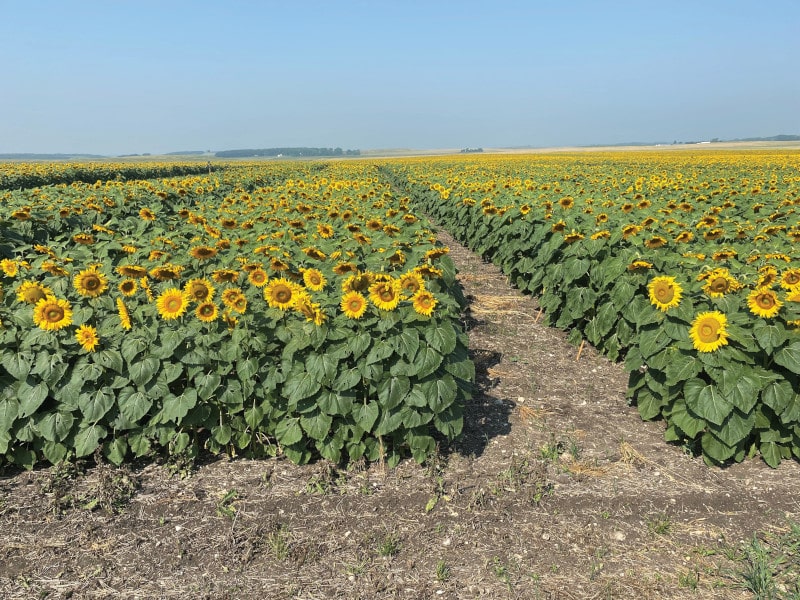Cultivated sunflowers are one of the five largest oilseed crops in the world and until now sunflower is the last of these crops to have its genome fully sequenced. This genome represents a cornerstone of future work to improve genetic diversity and utilize the sunflower’s stress resistance and ability to grow across different climates. Globally this $20 billion, healthy oilseed holds great promise for climate change adaptation, because it can grow and flourish across a diverse range of environmental conditions, including drought.
As the only major crop domesticated in North America, with its sun-like appearance that inspired artists and photographers alike, sunflower is both a social icon and a major subject for scientists. In evolutionary biology the sunflower is a long-time model for research on how new species arise, and in plant science the sunflower is a model for understanding solar tracking and plant growth.
Despite this large interest, assembling the sunflower genome has been extremely difficult because 70 to 80 percent is made up of repeating regions and this complexity has challenged leading edge assembly protocols for close to a decade. The sunflower genome is about 10% larger than the human genome. The challenge, however, is that the duplications in the sunflower are both longer and younger (i.e. more similar to each other) than in the human genome.
The publication of the sunflower genome in Nature comes after two major investments in sunflower genomics, totaling over $18 million, by Genome British Columbia (Genome BC), Genome Canada and other funders in 2009 and 2015. “This is one of the most challenging genomes published to date,” says Dr. Loren Rieseberg, a professor in the University of British Columbia’s Botany Department and a senior author on the paper. “Not only have we sequenced sunflower’s genome but we have also built physical and genetic maps of its structure, which increases the genome’s value for research and breeding.”
“We congratulate Dr. Rieseberg and the entire team on this accomplishment,” says Dr. Catalina Lopez-Correa, Chief Scientific Officer and Vice President, Sectors, at Genome BC. “Our investment will have significant benefits to academic and industry stakeholders because this information will help to inform the development of strains with stress-resistant traits like resistance to drought and low nutrients, enabling them to grow in dry and degraded soils. Such resistance traits will be key to increasing food production under climate change, especially in demanding environments like those found in sub-Saharan Africa.”
The full paper can be found here.
—Genome Canada











